Q
what is the common problem of mitsubishi xpander?
The Mitsubishi Xpander, a popular 7-seater MPV in Malaysia, does have a few common quirks we've noticed. The suspension tends to be on the firm side, which takes a bit of the edge off ride comfort – something you'll really feel on those rougher stretches of Malaysian road. Then there's the stock tires; a number of owners mention they don't quite grip as confidently as you'd like on wet surfaces. A good tip? Keep a regular check on your tire pressure and, if it fits your needs, consider upgrading the rubber for better safety.
Under the hood, the 1.5L MIVEC engine is no gas guzzler – it's actually pretty efficient. But let's be real, when you've got a full load or you're tackling a steep incline, it can feel a touch underpowered. The key here is to watch your payload and stick to regular servicing to keep it running at its best.
Now, don't get us wrong, the Xpander has some big pluses. That spacious interior and super flexible seating? Total game-changers. And let's not forget the maintenance costs – they're pretty wallet-friendly, which is a huge win for Malaysian families.
If you do run into those minor niggles, a little regular TLC and maybe some smart upgrades can go a long way in smoothing out your driving experience. Oh, and one pro tip: always stick to authorized service centers or use genuine parts. It might seem like a small thing, but it'll save you a ton of hassle down the line and keep your Xpander reliable for years to come.
Special Disclaimer: This content is published by users and does not represent the views or position of PCauto.
Related Q&A
Q
What is the ground clearance of the Xpander 2020?
The 2020 Mitsubishi Xpander has a ground clearance of 205mm, a design that makes it perform exceptionally well on Malaysia's diverse road conditions, handling both city driving and occasional country roads with ease. The higher ground clearance not only improves the vehicle's off-road capability but also effectively prevents the undercarriage from scraping on rough roads, making it particularly suitable for water accumulation section that may appear during Malaysia's rainy season. Ground clearance is one of the key indicators for measuring the practicality of SUVs and MPVs; models typically ranging between 180mm and 220mm can balance comfort and off-road performance. As a 7-seater MPV, the Xpander maintains a spacious interior while also focusing on optimizing the chassis height, giving it a competitive edge among models in its class. For Malaysian consumers, choosing a model with appropriate ground clearance is especially important, as it directly relates to the convenience and safety of daily driving, especially when dealing with areas with poor road conditions.
Q
What is the fuel consumption of the Mitsubishi Xpander Cross 2020?
According to official figures, the 2020 Mitsubishi Xpander Cross has a combined fuel consumption of approximately 6.5 to 6.9 liters per 100 kilometers, though the actual numbers can vary depending on driving habits, road conditions, and vehicle load. It’s powered by a 1.5-liter MIVEC naturally aspirated engine paired with a 4-speed automatic transmission, delivering smooth power and decent fuel efficiency—perfect for Malaysian family daily use. For owners looking to cut fuel costs further, regular vehicle maintenance, keeping tire pressure at the recommended level, and avoiding aggressive driving like sudden acceleration or hard braking can all help boost fuel efficiency. Plus, as a crossover MPV, the Xpander Cross doesn’t just shine in fuel economy; it also offers generous interior space and a higher ground clearance, making it ideal for Malaysia’s varied road conditions. Whether you’re commuting in the city or heading out for a weekend getaway, it handles it all with ease.
Q
How many seats are in the Mitsubishi Xpander 2020?
The 2020 Mitsubishi Xpander is a popular 7-seater MPV in the Malaysian market, featuring a 2+3+2 seating layout that can accommodate 7 passengers. The second-row seats fold down in a 60:40 split, while the third-row seats fold 50:50, offering flexible space configurations to meet different cargo needs. Under the hood, it's powered by a 1.5-liter MIVEC naturally aspirated engine, delivering 105 horsepower and 141 Nm of peak torque, paired with a 4-speed automatic transmission. It focuses on practicality and fuel efficiency, making it a great fit for family users. The Xpander also comes with basic features like a multifunction steering wheel and a touchscreen infotainment system. Its higher ground clearance (205mm) helps tackle some of Malaysia's rougher road conditions. Notably, the Xpander positions itself between compact MPVs and mid-size SUVs in the Southeast Asian market, competing with models like the Toyota Avanza and Honda BR-V. However, its unique exterior design and Mitsubishi's reputation for durability make it a top choice for many consumers.
Q
What size engine is in the Mitsubishi Xpander 2020?
The 2020 Mitsubishi Xpander is powered by a 1.5-liter MIVEC naturally aspirated petrol engine, model 4A91. This four-cylinder unit churns out 105 horsepower (77 kilowatts) and a peak torque of 141 Nm, paired with either a 5-speed manual or 4-speed automatic transmission. Its performance is ideal for daily family use, striking a good balance between fuel efficiency and reliability. This engine is widely used across multiple Mitsubishi models, boasting mature technology and low maintenance costs, making it well-suited for Malaysia's road conditions and climate. As a 7-seater MPV, the Xpander's engine is tuned to deliver strong low-end torque, perfect for city driving and carrying loads, aligning with the Southeast Asian market's preference for durability and practicality. It's worth noting that while naturally aspirated engines aren't as powerful as turbocharged ones, their simpler structure, easier maintenance, and lower long-term running costs are part of why the Xpander remains popular in Malaysia.
Q
Is Xpander 2024 3 cylinder?
Based on the current information, the 2024 Mitsubishi Xpander available in the Malaysian market is equipped with a 1.5 - liter MIVEC four - cylinder naturally aspirated engine, not a three - cylinder configuration. This engine delivers 105 horsepower and 141 Nm of torque, paired with either a 5 - speed manual or a 4 - speed automatic transmission. It focuses on providing smoothness and fuel efficiency for the family car market.
The doubts about a three - cylinder engine might stem from the fact that some brands have adopted three - cylinder technology in recent years for emission reduction purposes. However, the Xpander maintains a four - cylinder layout to ensure power stability. It's worth noting that although three - cylinder engines are smaller in size and more fuel - efficient, they usually require more advanced technical tuning for vibration suppression and high - speed performance. In contrast, the four - cylinder structure still has advantages in terms of durability and smoothness.
Malaysian consumers can make their choices according to their own needs when purchasing. If they prioritize low fuel consumption and are open to new technologies, they can look into three - cylinder models from other brands. If they prefer a more mature powertrain, the four - cylinder configuration of the Xpander remains a reliable option. It is recommended to take test drives to experience the differences.
Q
What is the ground clearance of the Xpander 2024?
The 2024 Mitsubishi Xpander has a ground clearance of 205 millimeters. This figure is relatively high among compact MPVs and allows the vehicle to adapt well to Malaysia's diverse road conditions, including urban roads and the rough terrains in the suburbs. The high ground clearance not only improves the vehicle's passability but also reduces the risk of chassis scratches, especially on flooded roads that may occur during the rainy season in Malaysia.
In addition to the ground clearance, the 2024 Xpander is also equipped with an optimized suspension system, which further enhances driving stability and comfort. For Malaysian consumers, this type of high - chassis MPV is very practical. It can meet the needs of family outings and handle complex road conditions.
If you often need to carry passengers or cargo and also pay attention to the vehicle's passability, the 2024 Xpander would be a great choice. Its space performance and practicality are also worth noting.
Q
Is the 2024 Mitsubishi Xpander a MPV or SUV?
The 2024 Mitsubishi Xpander falls into the MPV (Multi-Purpose Vehicle) category rather than the SUV (Sport Utility Vehicle) category. Its original design aim was to meet the needs of family users for spacious interiors and comfortable riding experiences. It features a three - row seat layout and sliding side doors, which are typical characteristics of MPVs. The Xpander has a relatively high ground clearance and crossover - style exterior kits, making it look somewhat like an SUV. However, in essence, it remains an MPV focused on practicality and versatility.
For consumers in Malaysia, the Xpander is an excellent family vehicle. It offers good comfort and convenience, whether for city driving or long - distance trips. The main differences between MPVs and SUVs lie in their body structures and uses. MPVs prioritize passenger space and cargo - loading flexibility, while SUVs emphasize off - road performance and driving visibility. Consumers can choose the appropriate model based on their actual needs.
The Xpander has always been very popular in the Malaysian market because it combines practicality, economy, and reliability, making it a great fit for local road conditions and family - use scenarios.
Q
What is the fuel consumption of the 2024 Mitsubishi Xpander?
The 2024 Mitsubishi Xpander offers a moderate fuel economy. According to official data, its combined fuel consumption is approximately 6.5 to 7.2 liters per 100 kilometers. The exact figure may vary slightly depending on driving habits, road conditions, and vehicle configurations (such as the 2WD or 4WD versions). This model is equipped with a 1.5-liter MIVEC naturally aspirated engine, paired with a 4-speed automatic or 5-speed manual transmission. The power is tuned to meet the practical needs of families.
For Malaysian users, the Xpander's fuel consumption is suitable for daily city commuting and medium - to short - distance trips, especially considering the common traffic congestion in the local area. It is recommended to perform regular maintenance (such as replacing the air filter and spark plugs) to optimize fuel efficiency. In addition, if you want to further reduce fuel consumption, you can try some fuel - saving driving techniques like smooth acceleration and reducing idling time.
Similar models in the same class, such as the Toyota Avanza or Honda BR - V, have a comparable fuel economy. However, the Xpander has an edge in terms of space flexibility and cost - effectiveness, making it a great choice for family users who value practicality.
Q
How to open the hood of Xpander 2024?
To open the hood of the 2024 Mitsubishi Xpander, first, sit in the driver's seat. Locate a handle with a hood icon near the driver's side foot area. Usually, it's located at the lower - left of the steering wheel or on the side of the dashboard. Pull this handle firmly, and you'll hear the sound of the first hood lock releasing. Then, walk to the front of the vehicle, reach your hand into the gap in the center of the front edge of the hood, and you can feel a lever for the secondary safety lock. Push the lever to the right and gently lift the hood to fully open it. It's recommended to ensure the vehicle is turned off and parked on a flat surface during the operation for safety.
It's worth noting that the hood opening methods of Xpander models from different years may vary slightly. The 2024 model uses a double - lock mechanism to prevent the hood from popping open accidentally while driving, which is also the standard safety design for most new cars nowadays. If you have difficulty opening the hood, don't force it. Check if both locks are fully released. Regularly applying lubricant to the lock parts can also keep the mechanism running smoothly. Understanding these details can help car owners better perform basic maintenance tasks such as checking the engine oil and coolant in daily life.
Q
What is the safety rating of the Mitsubishi Xpander 2024?
As of 2024, the safety rating of the Mitsubishi Xpander has not been officially announced by ASEAN NCAP or other major global evaluation institutions (such as Euro NCAP). However, referring to the performance of the 2023 model, the vehicle received a 4-star rating in the ASEAN NCAP test, mainly thanks to its standard basic safety features like dual airbags, ABS anti-lock braking system, and Electronic Stability Control (ESC). For Malaysian consumers, the practicality of the Xpander, such as its 7-seater layout and high ground clearance, is quite popular among family users. However, if you have higher requirements for safety performance, you can pay attention to models in the same class, such as the Toyota Veloz or the Honda BR-V, both of which promote themselves with a 5-star safety rating. It's worth noting that while safety ratings are important, actual driving safety depends more on driving habits and regular maintenance. It is recommended to test-drive the vehicle before purchasing to experience its dynamic performance and to check the convenience of the after-sales service network. Mitsubishi has a relatively well - established dealer system in Malaysia, which provides a guarantee for subsequent maintenance.
Latest Q&A
Q
Is the 2020 RAV4 Hybrid good in snow?
The 2020 RAV4 Hybrid handles pretty well in the snow, and that's mostly down to how its Electronic On-Demand All-Wheel Drive (E-Four) works with the hybrid system. The E-Four can quickly shift torque between the front and rear wheels, boosting grip on slippery surfaces, while the hybrid's electric motor responds fast, cutting down on wheel spin. On top of that, the standard Snow driving mode tweaks power delivery and braking, and when you pair that with decent ground clearance and stability control, it's solid for light to moderate snow. Now, don't get me wrong—it's better in the snow than a regular front-wheel-drive SUV, but if you're dealing with blizzards or icy roads, you still need winter tires or chains to be safe. Folks in warm climates might not care much about snow performance, but knowing these features gives you a full picture of the vehicle's all-weather ability, especially if you're planning a road trip to colder areas. Day to day, the hybrid system's low fuel use and quiet ride are big pluses too, making it good for both city driving and long hauls.
Q
Does the 2020 RAV4 Hybrid have good resale value?
The 2020 RAV4 Hybrid really holds its value well as a used car, mainly thanks to Toyota's strong local brand recognition and the long-standing reputation for reliability of its hybrid system. Under the hood, it's got that 2.5L Atkinson-cycle engine paired with an electric motor—great fuel economy, solid power delivery, and Toyota's hybrid tech has been market-tested for years, so people trust it to last. Looking at actual market performance, compared to the gas-only RAV4 from the same year, the hybrid version typically retains 5-8% more of its residual value, especially low-mileage models with complete service records. Other factors affecting resale value include regular maintenance history, exterior color (white and silver are more popular), and whether the original factory warranty is still active. It's worth noting that battery life is usually a top concern for used hybrid buyers, but Toyota backs the hybrid battery with an 8-year or 100,000-kilometer warranty, which helps ease those worries a bit. If you're thinking about selling it down the line, keeping full service records and getting regular battery health checks will definitely help maintain better residual value.
Q
How much is a 2020 RAV4 Hybrid worth?
The 2020 RAV4 Hybrid currently ranges in price from around RM120,000 to RM160,000 on the used car market, with the exact figure depending on factors like condition, mileage, trim level, and remaining warranty period. Under the hood, it packs a 2.5-liter hybrid powertrain that delivers impressive fuel efficiency—around 4.7 liters per 100 kilometers combined—along with 181 horsepower, striking a nice balance between energy saving and driving dynamics. Higher-spec models might come with features like a panoramic sunroof, JBL sound system, or Toyota Safety Sense (think pre-collision braking and lane-keeping assist), which can really push up the resale value. Before buying, it’s smart to check service records and battery health through Toyota’s certified pre-owned program or a trusted inspection service—hybrid battery longevity is usually a top concern for buyers, and an active factory warranty can seriously boost a used RAV4 Hybrid’s value. Rivals like the Honda CR-V or Mazda CX-5 might be a bit cheaper on the used market, but the RAV4 Hybrid tends to hold its value better thanks to Toyota’s solid reputation for hybrid tech. If you’re planning to finance, keep in mind banks might cap loans at around 70% for cars that are five years old.
Q
How to reset oil life on 2020 RAV4?
To reset the oil life indicator on a 2020 RAV4, first make sure the ignition is on but the engine isn't running. Then use the buttons on the left side of the steering wheel to navigate to the "Vehicle Settings" menu on the dashboard. Select "Oil Maintenance" and hold down the "OK" button to complete the reset. If your model has a touchscreen, you can also go into "Vehicle Settings" on the infotainment display, find the "Maintenance Reminder" function, and reset it manually. Keep in mind that different RAV4 trims might have slight variations in the steps, so it's a good idea to check your owner's manual for the exact procedure. Also, remember that the oil life indicator is an estimate based on mileage and engine conditions—resetting it starts the count fresh, but your actual service interval should still depend on your driving habits and oil quality. If you often drive in stop-and-go traffic or hot weather, consider shortening the interval to keep the engine in top shape. Using Toyota-recommended oil during regular maintenance helps extend engine life too. If you're not comfortable doing the reset yourself, just contact your authorized service center for help.
Q
How much is insurance on a 2020 Toyota RAV4?
The insurance cost for a 2020 Toyota RAV4 varies based on factors like vehicle age, trim level, owner's age, driving record, and coverage options. Generally, annual premiums for Comprehensive Coverage range from RM2,000 to RM5,000, while Third-Party Liability might be as low as around RM1,000. To get an exact quote, you'll need to provide details to the insurance company, such as the engine capacity (like the 2.0L or 2.5L variants), body color (some colors can affect premiums), and the security of where the vehicle is parked. It's worth noting that hybrid RAV4 models might have slightly higher premiums due to potentially higher repair costs, but their long-term fuel efficiency can offset some of those expenses. It's advisable to use online comparison platforms or insurance agents to get quotes from multiple companies. Also, ask about the terms for No Claim Discount (NCD) – typically, you can get up to a 55% premium reduction for several consecutive claim-free years. Additionally, installing a factory-fitted anti-theft system or choosing a higher voluntary excess amount can lower premiums, but you need to balance the risks and costs.
View MoreRelated News

Choose Honda HR-V or Mitsubishi XPANDER for a family car?
WilliamNov 12, 2025
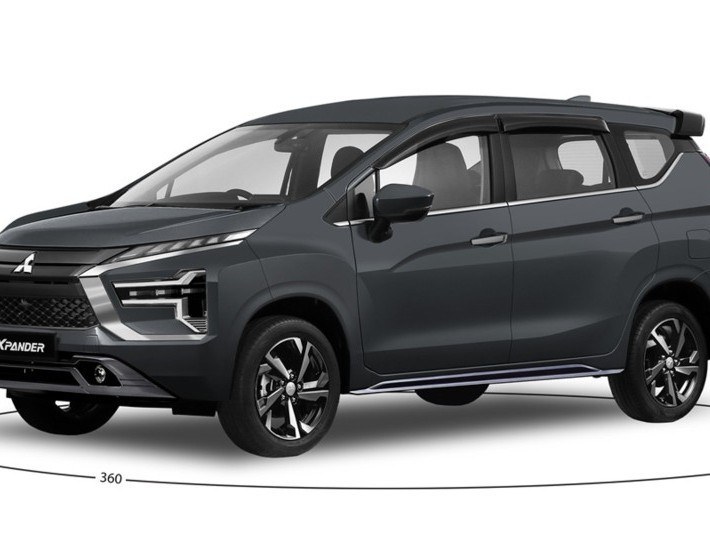
Mitsubishi Xpander On-Road Price: The Complete Pre-Purchase Guide
JamesApr 9, 2025

Mitsubishi Xpander Redesign: 4AT+1.5L Power Dated, Only 2 Safety Airbags!
JohnSep 24, 2024
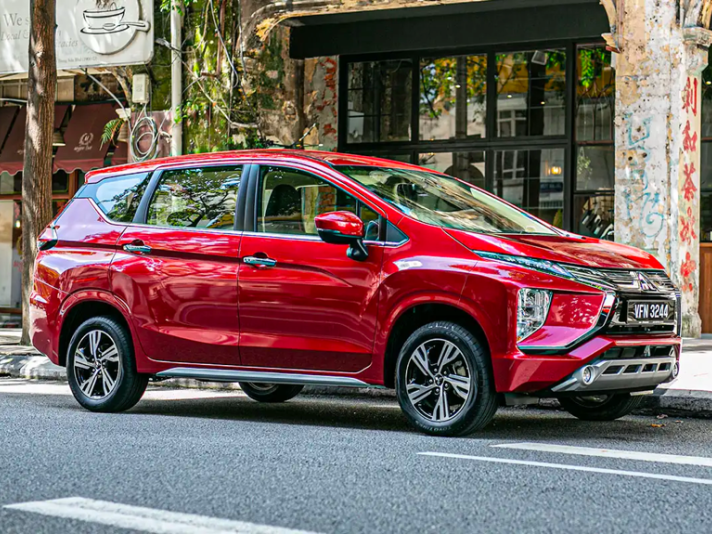
Mitsubishi Xpander: Priced at RM 100,980, a perfect combination of comfort, spaciousness and fashion
LienMay 30, 2024
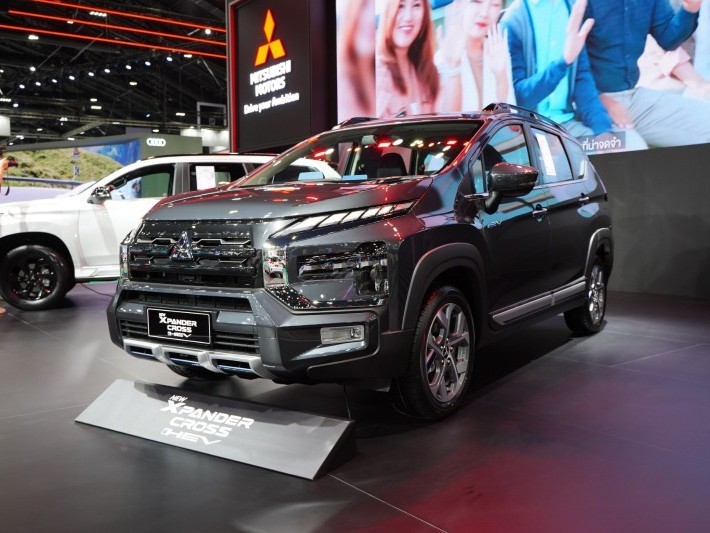
Bangkok Motor Show: MITSUBISHI XPANDER CROSS priced at 946,000 Thai Baht
Kevin WongMar 26, 2024
View More










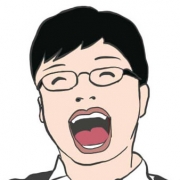

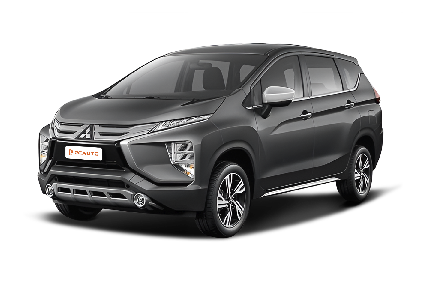





Pros
Cons